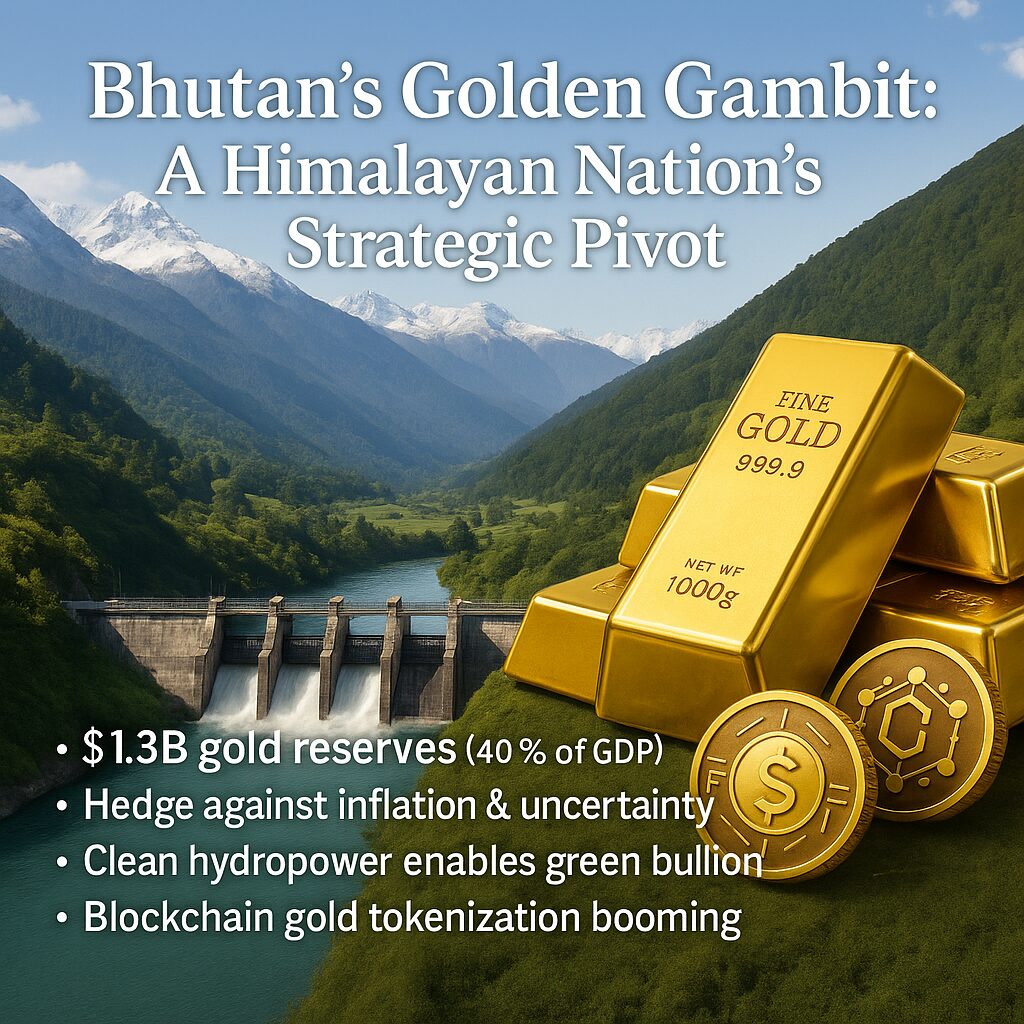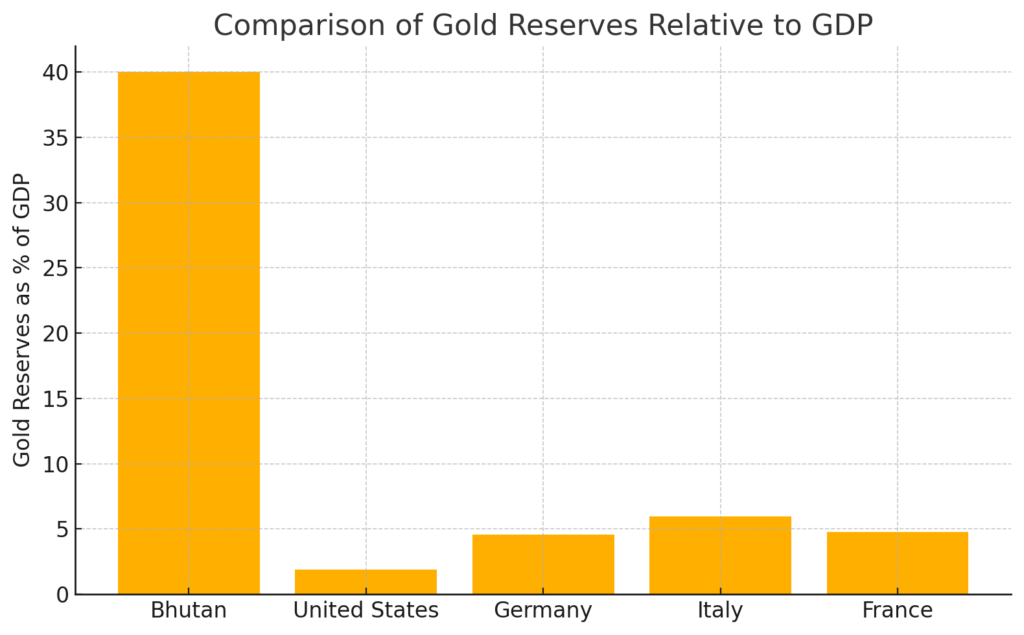
Main Points:
- Bhutan holds $1.3 billion in gold bullion—roughly 40% of its GDP—positioning it uniquely among nations.
- The move aligns with its Gross National Happiness philosophy by creating a stable economic backbone.
- Global central banks are also boosting gold reserves amid currency volatility and geopolitical risks.
- Bhutan’s reliance on hydropower for “clean” gold mining could appeal to ESG-focused investors.
- This “gold shift” may influence other small economies to diversify reserves outside fiat currencies.
1. From Happiness Index to Gold Reserves: Bhutan’s Unconventional Asset
Bhutan, renowned for its Gross National Happiness (GNH) philosophy, has quietly amassed $1.3 billion in gold bullion—equivalent to about 40% of its estimated $3.25 billion GDP. This stockpile is extraordinary: most major economies maintain gold at just a few percent of GDP, whereas Bhutan’s ratio dwarfs them all. By anchoring a significant share of national wealth in gold, Bhutan has constructed a robust hedge against fiat currency debasement and global financial shocks.
2. A Sustainable Strategy Rooted in Gross National Happiness
Bhutan’s GNH framework balances economic, environmental, cultural, and governance goals. While spiritual well-being and environmental stewardship are core, they depend on a stable economic foundation. Gold—often called the “ultimate safe asset”—provides that foundation by diversifying reserves beyond fluctuating currencies and sovereign bonds . Moreover, Bhutan’s abundant hydroelectric capacity allows the country to pursue domestic gold extraction in an eco-friendly manner, potentially branding its reserves as “clean gold” and attracting ESG investors.
3. Global Gold Trends: Central Banks Double Down
Bhutan’s gold accumulation mirrors a broader trend: central banks worldwide plan to increase their gold holdings at the fastest pace in five years. A Reuters-backed World Gold Council survey found that 76% of reserve managers expect to boost gold reserves over the next five years, and 95% foresee official sector gold demand rising in the coming 12 months. Amid geopolitical tensions and inflationary pressures, gold’s appeal as a safe haven and portfolio diversifier is stronger than ever.
4. Charting Bhutan’s Outlier Status
Below is a comparison of gold reserves as a percentage of GDP for Bhutan versus major holders.
Gold Reserves vs GDP Ratio Table and Chart

5. Implications for Small Economies and Investors
Bhutan’s audacious strategy offers a blueprint for other small, resource-rich nations seeking to fortify their economies. By leveraging natural advantages—hydropower, in Bhutan’s case—for sustainable asset accumulation, these countries can reduce dependence on volatile fiat currencies. For private investors, Bhutan’s move underscores the value of non-traditional, ESG-friendly assets in portfolio diversification.
Conclusion
Bhutan’s transformation into a “gold bullion powerhouse” underscores the strategic merits of aligning national philosophy with financial resilience. By dedicating 40% of its GDP to gold reserves—backed by clean energy—Bhutan not only secures long-term stability but also pioneers an ESG-driven asset model. As global central banks accelerate gold acquisitions, Bhutan’s example may inspire a new wave of “gold shift” strategies among small economies and impact conventional asset-allocation frameworks worldwide.

